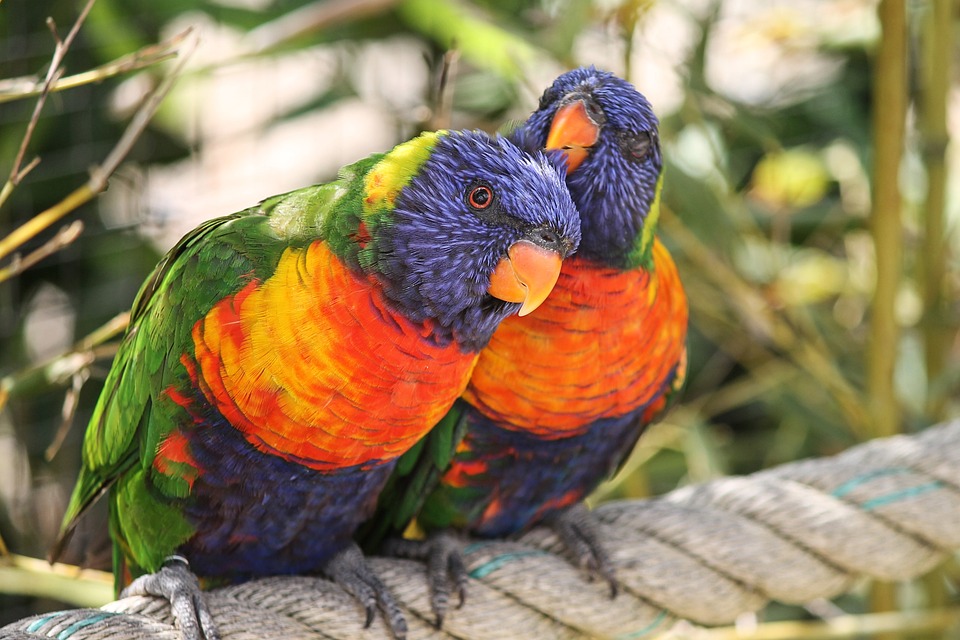Parrots are highly intelligent creatures that possess the ability to learn and perform fun tricks. Teaching tricks not only provides mental stimulation for your parrot but also strengthens the bond between you and your feathered friend. In this article, we will explore effective techniques for teaching your parrot fun tricks, along with addressing some frequently asked questions about parrot behavior.
Before diving into teaching tricks, it’s essential to understand how parrots learn and respond to training. Parrots are highly social creatures that thrive on positive reinforcement. They respond best to rewards, such as treats or praise, when they exhibit the desired behavior. Understanding your parrot’s individual preferences and personality will help you tailor your training methods accordingly.
Positive reinforcement is the cornerstone of effective parrot training. By rewarding your parrot with something it enjoys, such as a small piece of fruit or verbal praise, immediately after it performs the desired behavior, you are reinforcing that behavior and increasing the likelihood of it being repeated. Punishment or negative reinforcement should never be used, as it can lead to fear and aggression in parrots.
When selecting a trick to teach your parrot, consider its natural abilities and physical limitations. Parrots have varying degrees of dexterity and coordination, so choose tricks that are suitable for your parrot’s species and individual capabilities. Some popular tricks for parrots include waving, turning around, retrieving objects, and playing dead.
Training a parrot requires patience, as each bird learns at its own pace. Consistency is also vital; setting aside regular training sessions and using consistent cues and rewards will help your parrot understand what is expected of it. Remember to keep the training sessions short and enjoyable, as parrots can lose interest if the sessions become too long or repetitive.
Now that we have a solid understanding of parrot behavior, let’s delve into the step-by-step process of teaching tricks to your feathered companion.
Begin by teaching your parrot basic commands such as “step up” or “perch.” These commands serve as a foundation for more complex tricks and help establish a communication system between you and your parrot. Use positive reinforcement, rewarding your parrot with a treat or praise whenever it correctly responds to a command.
Once your parrot has mastered the basic commands, introduce the desired trick gradually. Break down the trick into small, manageable steps, ensuring that your parrot understands and can perform each step before moving on to the next. For example, if you want to teach your parrot to wave, start by teaching it to lift its foot, then progress to extending its foot towards you.
Parrots are intelligent creatures that respond well to visual and verbal cues. Pairing a specific hand gesture or verbal command with each step of the trick will help your parrot understand what you expect from it. Consistently use the cues during training sessions, and gradually reduce the dependence on physical prompts as your parrot becomes more proficient.
Rewarding your parrot’s successful attempts at the trick is crucial for reinforcing the behavior. Offer immediate praise, a favorite treat, or a combination of both to let your parrot know it has done well. Remember to be patient and provide positive reinforcement consistently, even if your parrot is not perfect at first. With time and practice, your parrot will improve and master the trick.
Now, let’s address some frequently asked questions about teaching tricks to parrots.
Can all parrot species learn tricks? While different parrot species have varying levels of intelligence and natural abilities, most parrots can learn tricks to some extent. However, some species, such as African Greys and Cockatoos, are known for their exceptional learning abilities.
How long does it take to teach a parrot a trick? The time it takes to teach a parrot a trick varies depending on the individual bird, the complexity of the trick, and the consistency of training. Simple tricks can be learned within a few days or weeks, while more complex tricks may take several months of consistent training.
Can older parrots learn new tricks? Yes, older parrots can learn new tricks! While younger parrots may be more receptive to learning, older parrots can still acquire new skills with patience and consistent training. Tailor the training sessions to accommodate their age and physical abilities.
What if my parrot refuses to learn a trick? If your parrot seems uninterested or resistant to learning a particular trick, consider adjusting your training approach. Break down the trick into smaller steps, use higher-value rewards, or try incorporating more engaging training techniques. Remember, each parrot is unique, so be flexible and adapt your methods accordingly.
Are there any tricks that are not suitable for parrots? Some tricks may put unnecessary strain on a parrot’s physical well-being or compromise its safety. Avoid tricks that involve excessive jumping, balancing on unstable objects, or using props that could potentially harm the bird. Always prioritize your parrot’s safety and well-being when selecting tricks to teach.
In conclusion, teaching your parrot fun tricks can be a rewarding experience for both you and your feathered friend. By understanding parrot behavior, utilizing positive reinforcement, and following a step-by-step training process, you can successfully teach your parrot a variety of entertaining tricks. Remember to be patient, consistent, and always prioritize your parrot’s happiness and well-being during the training process.









